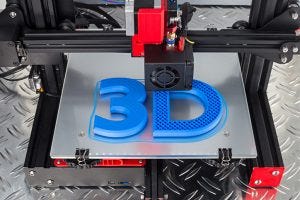Bioengineering for "Benchtop Clinical Trials"Bioengineering for "Benchtop Clinical Trials"
February 6, 2020

Image: iStock/Grafner
Animal studies can be poor predictors of human drug response. Species-specificity of organs is a concern especially for the heart. Many drugs that enter clinical trials will fail ultimately because of unexpected cardiotoxicity. Drug developers would love to mitigate such risks through in vitro human cardiac testing, but human heart biopsy materials and donor organs do not survive well in a laboratory setting.
Breakthroughs with human stem cells offer an alternative. It is now possible to take a simple skin biopsy or blood draw, then isolate and expand specific cells, then genetically reprogram them into induced pluripotent stem cells (iPSCs). Those subsequently can differentiate into any cell type, such as heart or liver cells. Human iPSC-derived cardiomyocytes can thrive in long-term culture, and their nearly unlimited supply enables bioengineering efforts aimed at creating in vitro models of the human heart.
Recent developments in tissue engineering now provide a wide range of human tissues for species-specific preclinical testing. And emerging technologies for three-dimensional (3D) bioprinting offer increasingly complex tissues and organs that could improve drug testing.
Cardiac Case Study
The Novoheart MyHeart platform includes four related assays based on human stem-cell–derived cardiac cells and tissues for modeling different aspects of human heart function. Highly purified and well-characterized human ventricular cardiomyocytes (hvCMs) can be used for traditional single-cell measurements and in higher-order multicellular assays.
Multicellular Assays: A human ventricular cardiac anisotropic sheet (hvCAS) is a layer of hvCMs cultured on a microgrooved substrate that aligns the cells with an electrical conduction pattern closely mimicking that of a real human heart. This is combined with optical mapping technology to create an assay for visualizing cardiac arrhythmia, a potentially lethal side effect of cardiotoxic drugs.
A human ventricular cardiac tissue strip (hvCTS) consists of a million hvCMs embedded within a collagen matrix to form a 3D tissue that contracts and generates force like muscle fibers in a human heart. A custom force-sensing bioreactor device enables noninvasive and long-term monitoring of cardiac contractile performance in response to drug treatments.
Finally, the human ventricular cardiac organoid chamber (hvCOC) is a functional miniature human ventricular pump made of 10 million hvCMs in a hollow spherical configuration that integrates electrophysiological and contractile properties in a 3D cardiomimetic assay. This is the first human-specific miniature-heart assay to provide organ-level functional readouts (such as pressure-volume loops, ejection fractions, and cardiac outputs) that will be of immediate interest to cardiologists (1).
Enter 3D Bioprinting: All tissue engineering starts out with cells and matrix materials in a liquid suspension. In the traditional approach, that suspension is cast into a mold of desired shape, and over the course of several days the cells remodel and self-assemble into a simplified tissue structure. In 3D bioprinting, the cell–matrix suspension is a specially formulated “bioink” and extruded through a needle-like nozzle that moves in a computer-controlled pattern. The fluid sets quickly into a gel-like material, so it can be built up layer by layer to form a desired 3D structure. Multiple bioinks can be combined to create tissues with different compositions, properties, and geometrical complexities.
This is nascent technology. Only two studies have been published so far using 3D bioprinting to create human miniature hearts. In one case, multicolored bioinks were used to print a four-chambered miniature heart with blood vessels that had a realistic appearance but no functional behavior (2). In another case, a miniature heart with patient-specific anatomical structure was created, and evidence of electrical and contractile activity was shown (3). The level of functionality appeared weak, however, and no responses to pharmaceutical treatments were reported. 3D bioprinting could provide human miniature hearts with unprecedented complexity, but their value for applications in biopharmaceutical development remains unproven.
A Hybrid Approach
New opportunities could arise from combining the rapidity, automatability, and consistency of bioprinting with the functional capability and biofidelity of tissue engineering. Together with the comprehensive and tailor-made capabilities of platforms such as Novoheart’s, a hybrid approach could be disruptive in drug testing. Such technologies might even obviate the need for animal testing. Developing a diverse biobank of human iPSCs could enable next-generation screening with stratification by sex, race, or genetic background — and even enable individual patient-specific testing for precision-medicine applications. The future looks bright for bioengineered human miniature organs to provide “clinical trials on the benchtop.”
References
1 Li RA, et al. Bioengineering an Electromechanically Functional Miniature Ventricular Heart Chamber from Human Pluripotent Stem Cells. Biomaterials May 2018: 116–127.
2 Noor N, et al. 3D Bioprinting of Personalized Thick and Perfusable Cardiac Patches and Hearts. Adv. Sci. 6(11) 2019: 1900344.
3 MacQueen LA, et al. A Tissue-Engineered Scale Model of the Heart Ventricle. Nat. Biomed. Eng. 2, 2018: 930–941.
Kevin D. Costa, PhD, is cofounder and chief scientific officer of Novoheart, Suite 2600, 595 Burrard Street, Vancouver, BC, V7X 1L3, Canada; 1-604-398-3170; www.novoheart.com.
You May Also Like





